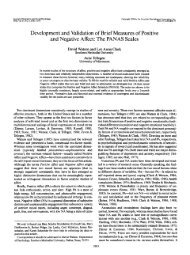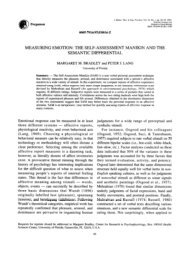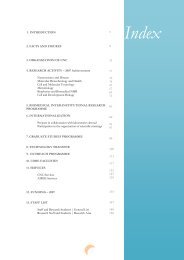Pharmacometrics | Head: Amílcar Falcão FerreiraObjectivesPharmacometrics is the science <strong>of</strong> developing <strong>and</strong>applying mathematical <strong>and</strong> statistical methods tocharacterize, underst<strong>and</strong>, <strong>and</strong> predict a drugs’spharmacokinetic, pharmacodynamic, <strong>and</strong>biomarker‐outcomes behaviour. In effect,pharmacometrics is the science <strong>of</strong> interpreting <strong>and</strong>describing pharmacology in a quantitative fashion.We explored methods to predict early in the drugdevelopment the ADME (Absorption, Distribution,Metabolism <strong>and</strong> Excretion) as well as drug‐druginteractions <strong>of</strong> new chemical entities (NCEs).Model‐based drug development is characterised bythe development <strong>and</strong> application <strong>of</strong>pharmacostatistical models <strong>of</strong> drug efficacy <strong>and</strong>safety from non‐clinical <strong>and</strong> clinical data toimprove drug development knowledgemanagement <strong>and</strong> decision making.Main AchievementsThe Pharmacometrics Group as a new group(started in 2007), has a small experience to share atthe present time. There<strong>for</strong>e, some individualongoing projects were incorporated in the group<strong>and</strong> some <strong>of</strong> our achievements can be easily foundanalysing the productivity section. Nevertheless,our preclinical research studies in new drugdevelopment process focused on eslicarbazepineacetate could be the considered the main structuredachievement in <strong>2008</strong>.Eslicarbazepine acetate (ESL) is a promising centralnervous system‐active compound recentlyaccepted by the authorities to be put on theEuropean market <strong>for</strong> the treatment <strong>of</strong> epilepsy(submission to FDA are going on). In the last years,we have been involved in the ESL developmentprogram to complete the pharmacokinetic dataobtained from preceding <strong>and</strong> ongoing ESL clinicaltrials. Since pharmacokinetic studies imply theevaluation <strong>of</strong> drug concentrations over the time inthe biological matrices <strong>of</strong> interest, we developed<strong>and</strong> validated the first chiral liquidchromatographic method with ultraviolet detection(LC‐UV) to determine ESL <strong>and</strong> its metabolites [Slicarbazepine(S‐Lic), R‐licarbazepine (R‐Lic) <strong>and</strong>oxcarbazepine (OXC)] in mouse plasma <strong>and</strong> brain,liver <strong>and</strong> kidney tissue homogenates. Additionally,a similar LC‐UV method was also developed inhuman plasma, making available a useful tool notonly to support ESL clinical research but also to theroutine therapeutic drug monitoring assays.Recently we characterized the pharmacokinetics<strong>and</strong> the oral biodisposition <strong>of</strong> ESL in adult maleCD‐1 mice, <strong>and</strong> then we studied thepharmacokinetics <strong>and</strong> the enantioselectivedisposition <strong>of</strong> S‐Lic <strong>and</strong> R‐Lic (pharmacologicallyactive metabolites <strong>of</strong> ESL).ESL is rapidly <strong>and</strong> extensively metabolised in miceto S‐Lic (major metabolite), which is then oxidisedto OXC to a small extent. R‐Lic was not found inmeasurable amounts in all matrices. On the otherh<strong>and</strong>, following the oral administration to mice <strong>of</strong>each licarbazepine enantiomer separately, it wasnoted that S‐Lic <strong>and</strong> R‐Lic were rapidly absorbed<strong>and</strong> immediately distributed, at least, to the highlyperfused tissues. Both licarbazepine enantiomerswere metabolized to a small extent but, even so, thebi‐directional chiral inversion was observed <strong>and</strong> itoccurred preferentially in the R→S direction.52OOCH 3NONH 2ESLHOONONH2S-LicNO NH 2OXCHONTrans-diolONH2R-LicProposed metabolism <strong>of</strong> ESL, S‐Lic <strong>and</strong> R‐Lic in CD‐1 mice.The thickness <strong>of</strong> the arrows indicates the relative extent <strong>of</strong>the metabolic pathways.
PublicationsAlmeida L, Nunes T, Falcão AC, Minciu I, Magureanu SA, Butoianu N, Soares‐da‐Silva P (<strong>2008</strong>)Pharmacokinetics, Efficacy, <strong>and</strong> Tolerability <strong>of</strong> Eslicarbzepine Acetate in Children <strong>and</strong> Adolescents. J. Clin.Pharmacol. 48: 966‐977.Almeida L, Falcão AC, Coelho R, Albino‐Teixeira A, Soares‐da‐Silva P (<strong>2008</strong>) The role <strong>of</strong> socio‐economicconditions <strong>and</strong> personality characteristics on the willingness to volunteer <strong>for</strong> phase I studies. Pharm. Med.22(6): 367‐374.Almeida L, Falcão AC, Vaz‐da‐Silva M, Coelho R, Albino‐Teixeira A, Soares‐da‐Silva P (<strong>2008</strong>) Personalitycharacteristics <strong>of</strong> volunteers to Phase 1 studies <strong>and</strong> likelihood <strong>of</strong> reporting adverse events. Int. J. Clin.Pharmacol. Ther. 46(7): 340‐348.Almeida L, Falcão AC, Vaz‐da‐Silva M, Nunes T, Santos AT, Rocha JF, Neto C, Macedo T, Fontes‐RibeiroC, Soares‐da‐Silva P (<strong>2008</strong>) Effect <strong>of</strong> nebicapone on the pharmacokinetics <strong>and</strong> pharmacodynamics <strong>of</strong>warfarin in healthy subjects. Eur. J. Clin. Pharmacol. 64: 961‐966.Almeida L, Minciu I, Nunes T, Butoianu N, Falcão AC, Magureanu SA, Soares‐da‐Silva P (<strong>2008</strong>)Pharmacokinetics <strong>of</strong> eslicarbazepine acetate in children <strong>and</strong> adolescents with epilepsy. J. Clin. Pharmacol.48: 966‐977.Alves E, Summavielle T, Alves CJ, Custódio JBA, Fern<strong>and</strong>es E, Bastos ML, Tavares MA, Carvalho F (<strong>2008</strong>)Ecstasy‐induced oxidative stress to adolescent rat brain mitochondria in vivo: influence <strong>of</strong> monoamineoxidase type A. Addict. Biol. 14:185‐93.Alves G, Figueiredo I, Falcão AC, Castel‐Branco M, Caramona MM, Soares‐da‐Silva P (<strong>2008</strong>)Stereoselective disposition <strong>of</strong> S‐ <strong>and</strong> R‐Licarbazepine in the mouse. Chirality 20(6): 796‐804.Alves GL, Fortuna A, Falcão AC (<strong>2008</strong>) High‐Per<strong>for</strong>mance Liquid Chromatography <strong>and</strong> its Impact in theDevelopment <strong>of</strong> Chiral Drugs: a Review. Trends Chromatography 4: 1‐10.53Alves GL, Figueiredo IV, Castel‐Branco MM, Lourenço N, Falcão AC, Caramona MM, Soares‐da‐Silva P(<strong>2008</strong>) Disposition <strong>of</strong> Eslicarbazepine Acetate in the Mouse after Oral Administration. Fund. Clin.Pharmacol. 22(5): 529‐36.Alves Ema, Summavielle Teresa, Alves CJ, Custódio JBA, Fern<strong>and</strong>es E, Bastos ML, Tavares MA, CarvalhoF (<strong>2008</strong>) Ecstasy‐induced oxidative stress to adolescent rat brain mitochondria in vivo: influence <strong>of</strong>monoamine oxidase type A. Addict. Biol. 14:185‐93.Barbosa RM, Marques CF, Santos RM, Pomerleau F, Huettl P, Gerhardt GA <strong>and</strong> Laranjinha J (<strong>2008</strong>) In vivoreal time measurement <strong>of</strong> endogenous nitric oxide in anesthetized rat brain. Methods in Enzymology 441,351‐367.Bem AF, Farina M, Portella RD, Nogueira CW, Dinis TC, Laranjinha JA, Almeida LM, Rocha JB (<strong>2008</strong>)Diphenyl diselenide, a simple glutathione peroxidase mimetic, inhibits human LDL oxidation in vitro.Atherosclerosis 201, 92‐100.Brito PM, Devillard R, Nègre‐Savayre A, Almeida LM, Dinis TCP, Salvayre R <strong>and</strong> Augé N (<strong>2008</strong>)Resveratrol inhibits the mTOR mitogenic signalling evoked by oxidized LDL in smooth muscle cells.Atherosclerosis. doi:10.1016/J.Atherosclerosis.<strong>2008</strong>.11.011.Brito PM, Simões NF, Almeida LM <strong>and</strong> Dinis TCP (<strong>2008</strong>) Resveratrol disrupts peroxynitrite‐triggeredmitochondrial apoptotic pathway: a role <strong>for</strong> Bcl‐2. Apoptosis 13 1043‐1053.Cardoso S, Santos R X, Carvalho C, Correia S, Pereira GC, Pereira SS, Oliveira PJ, Santos MS, Proença T,Seiça R, Oliveira CR, Moreira P (<strong>2008</strong>) Doxorubicin Increases the Susceptibility <strong>of</strong> Brain Mitochondria tothe Calcium‐induced Permeability Transition <strong>and</strong> Oxidative Damage. Free Rad. Biol. Med. 45(10):1395‐402.Carvalho C, Correia S, Santos MS, Seiça R, Oliveira CR, Moreira PI (<strong>2008</strong>). Met<strong>for</strong>min promotes isolated ratliver mitochondria impairment. Mol. Cell Biochem. 308(1‐2):75‐83.
- Page 7 and 8: General ObjectivesThe CNC major mis
- Page 11 and 12: OrganizationThe Center for Neurosci
- Page 13: Microbiology | Milton CostaMicrobio
- Page 16 and 17: per year) will be proposed by the g
- Page 18 and 19: Neuroprotection and Neurogenesis in
- Page 20 and 21: Retinal Dysfunction and Neurogenesi
- Page 22 and 23: Glutamatergic synapses | Head: Ana
- Page 24 and 25: Neuronal Cell Death and Neuroprotec
- Page 26 and 27: Molecular Mechanisms of Disease | H
- Page 28 and 29: PublicationsAgasse F, Bernardino L,
- Page 30 and 31: Santiago AR, Carvalho, CM, Carvalho
- Page 32 and 33: “Nano‐transportadores de base l
- Page 34 and 35: Vectors and Gene Therapy GroupM. Co
- Page 36 and 37: Molecular Systems Biology | Head: A
- Page 38 and 39: Vectors and Gene Therapy | Head: Ma
- Page 40 and 41: PublicationsAlves S, Nascimento‐F
- Page 43 and 44: Area C | Cell and Molecular Toxicol
- Page 45 and 46: Mitochondrial Toxicology and Pharma
- Page 47: Pharmacometrics GroupAmílcar Falc
- Page 50 and 51: Free Radicals and Antioxidants in B
- Page 54 and 55: Correia S, Carvalho C, Santos MS, P
- Page 57 and 58: Area D | MicrobiologyCoordinator |
- Page 59: Microbiology of Extreme Environment
- Page 62 and 63: Medical Mycology - Yeast Research |
- Page 65 and 66: Area E | Biophysics and Biomedical
- Page 67 and 68: Inorganic Biochemistry and Molecula
- Page 69 and 70: Inorganic Biochemistry and Molecula
- Page 71 and 72: Cell Biophysics |Head: Luís Martin
- Page 73: Sobral AJFN, Justino LLG, Santos AC
- Page 76 and 77: Future PlansThere is an enormous we
- Page 78 and 79: Paula MotaSara M. Diniz Martins Lop
- Page 80 and 81: Biology of Reproduction and Human F
- Page 82 and 83: Insulin Resistance and Adipocyte |
- Page 85 and 86: Biomedical Inter‐Institutional Re
- Page 87 and 88: 3. Pediatric Research: metabolic di
- Page 89 and 90: PublicationsSantos MJ, Cleto S, Men
- Page 91: 7. Research in brain cancer: geneti
- Page 94 and 95: Grafting SVZ neural stem cell cultu
- Page 96 and 97: Structure‐function analysis of th
- Page 98 and 99: Anticancer Effects of of Phytochemi
- Page 100 and 101: Investigaciones Biomédicas “Albe
- Page 102 and 103:
Participation in the organization o
- Page 104 and 105:
May 2008Member of the organizing co
- Page 106 and 107:
106
- Page 108 and 109:
Genome BiologyFebruary 25 ‐ 27Isa
- Page 110 and 111:
Seminars2008 Series | CNC Audithori
- Page 112 and 113:
13.6.2008Cells caught in the act: M
- Page 114 and 115:
5.12.2008Unexpected fate and functi
- Page 116 and 117:
Elisabete Ferreiro“Cross‐talk b
- Page 118 and 119:
Ana Isabel Vicente Rafael“Estudos
- Page 120 and 121:
Rosete Pais“Papilomavirus humano
- Page 122 and 123:
122
- Page 124 and 125:
124
- Page 126 and 127:
FLOW CYTOMETRY UNITHead of Unit: Is
- Page 128 and 129:
MASS SPECTROMETRY UNITHead of Unit:
- Page 130 and 131:
130
- Page 132 and 133:
Amino Acid AnalysisOur laboratory r
- Page 134 and 135:
2. Areas of Expertise / Research /
- Page 136 and 137:
Multiple SclerosisAn extension of t
- Page 138 and 139:
2.2. Centre for Bioavailability Stu
- Page 140 and 141:
StaffCoordinatorTice Macedo, MD, Ph
- Page 142 and 143:
142
- Page 144 and 145:
Compatible solutes from extremophil
- Page 146 and 147:
Proteases aspárticas secretadas em
- Page 148 and 149:
Mecanismos de plasticidade sinápti
- Page 150 and 151:
Clivagem dos transportadores vesicu
- Page 152 and 153:
ʺBIOINK ‐ Aprendizagem increment
- Page 154 and 155:
154
- Page 156 and 157:
Henrique Faneca (Auxiliar Inv., CNC
- Page 158 and 159:
Liliana Bernardino 100Luis Miguel E
- Page 160 and 161:
João Teixeira 100João Teodoro 100
- Page 162 and 163:
Patricia Henriques Domingues 100Pat
- Page 164 and 165:
ADMINISTRATIVE STAFFTime % at CNCAr
- Page 166 and 167:
Sandra Isabel M. Cardoso (Auxiliar
- Page 168 and 169:
Molecular Biotechnology and HealthE
- Page 170 and 171:
Cell and Molecular ToxicologyLeonor
- Page 172 and 173:
MicrobiologyMilton Costa, PhD, Coor
- Page 174 and 175:
Paulo Gameiro Guerreiro 100Pedro Co
- Page 176 and 177:
Marta Isabel Rodrigues Baptista 100
- Page 178:
Url: http://www.cnbc.pt | Email: in






